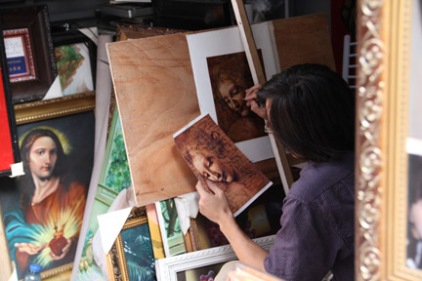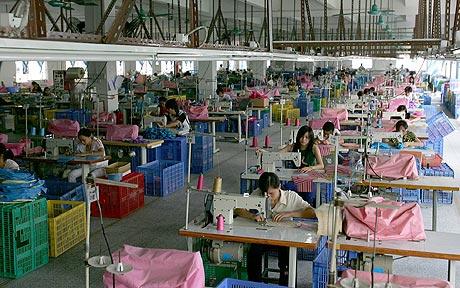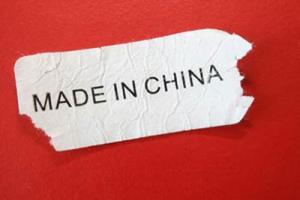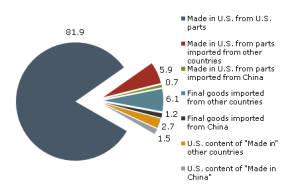For decades China has been renowned for it’s ability to copy and mass-produce foreign designs on a massive scale. It is this mass manufacturing that has been the driving force behind the country’s massive economic boom in recent years. However, as a new generation of young creatives begin to embrace today’s changing China and the new freedom that comes with it, will the phrase ‘made in China’ soon be evolving into ‘designed in China’?
China’s primary industry today is taking sample designs of gadgets, clothes, toys, etc. provided by western companies, reproducing them on a large scale in one of hundreds of thousands of factories, to then export back to the west to be sold. To be able to do this and do it well, meticulous attention to detail is key, and this is something the Chinese have certainly mastered. Team this with an abundance of workers willing to work long hours for little pay, and it’s no surprise so many companies, big and small, both high end and low end, choose to manufacture their products in China. No wonder it’s been labelled ‘the world’s factory’ seeing as only a tiny percentage of goods produced in China’s factories actually stay in China, the rest end up in shops all over the world.
However this Chinese fascination with copying foreign designs is no longer simply a means of successful mass production for foreign companies, it has become a part of everyday life in modern China. Whether it be American style homes and suburbs, British style villages or imitation and counterfeit goods, this obsession with copying has spread through all parts of Chinese consumer culture.
Counterfeit Capital of the World…
Chapter six of Karl Gerth’s As China Goes, So Goes the World, explains how consumers live in uncertainty due to the huge number of low quality counterfeit products on the Chinese market.
‘Brand owners in China estimate that 15 to 20 percent of all prominent branded goods in China are actually counterfeit…’
Sometimes there’s no way of telling what is real or what is fake until it’s too late, as victims of countless counterfeit scandals, such as the ‘big-head-baby’ formula scandal of 2004, have found out.
Shanzhai Culture…

Gerth also explains the concept of Shanzhai culture, when copies of popular western designs, most commonly mobile phones, are passed off not as fakes but as imitations, usually with similar sounding names, far lower prices and sometimes with more features to suit the Chinese market. These shanzhai products are not viewed as negatively as counterfeit products, they are sold openly and have ‘gained a level of social acceptance’. These ‘imitations’ are interesting, because although the appearance of the product has been copied, shanzhai manufacturers often add features, alter programs and change certain aspects of the design, therefore, in Gerth’s words, ‘blurring the line between imitating and originating.’
Thames Town…

30 km from central Shanghai, you will find Thames Town, a town made up of English style houses, streets, parks, shops and churches. Everyday soon to be married Chinese couples flock here to have their wedding photos taken against this bizarre backdrop of a perfect English market town.

Copy Artists…

I recently watched a documentary called Copy Artists, that explored the town of Dafen in Shenzen, a town famous for its oil painters. However the majority of the painters that live and work here are not creating works of their own, they are working in assembly lines, producing imitations of famous paintings to sell. Most of the people who work in these assembly lines are art students, working to pay their way through their studies, but others are struggling artists who have never been able to make a living selling their own work. Despite the high quality and amount of effort that goes in to each and every painting, workers earn very little, probably about as much as factory workers do in the city. People have argued that this process of copying classic pieces to sell is wrong, but the studio owners behind them argue that because they are not trying to sell their pieces as the original and are always open with the fact that it is merely an imitation, that it is perfectly ethical and not counterfeit.
A New Generation…
It is exciting to know that to counteract this copycat culture, an aspirational new generation of creative people with big ideas now have the freedom to express themselves and open the door to make way for a new way of design thinking in China. This generation are not content with copying foreign designs and are striving to push China in the direction of not only making, but also designing their own products. The documentary China Rises: City of Dreams, features Shanghai based fashion designer Jenny Ji. In an interview, Jenny sums up the attitude of this creative generation and their new found freedom…
‘I’m a designer from the new generation and I feel great. I don’t have the old restrictions and boring attitudes…
The old pessimism has gone, and I can embrace the new changes. I’m always dreaming of the choices available to me…’
Fuelled by a society that is bursting with confidence and originality, the future of China has the potential to be one of design and innovation rather than simple replicating and manufacturing, an exciting thought for any young designer like myself.











